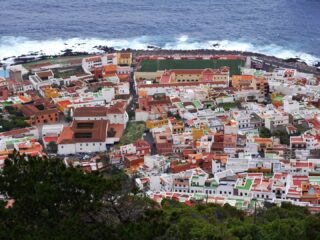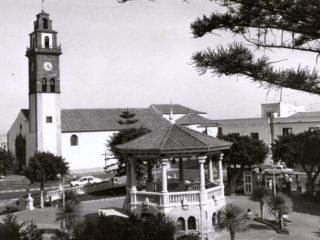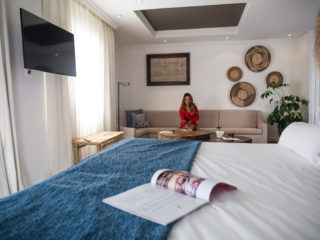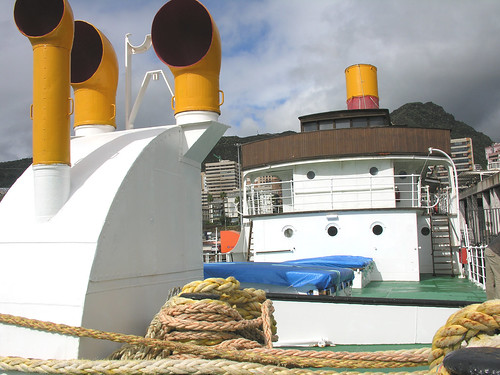
You know what it’s like, you are 98-years-old, weigh 50 tons, you’ve burst your boiler and no one wants you any more. What you really need is some friends. Judging by the enthusiastic school party scampering over the steam ship La Palma, the Correillo (post ship) built on Middlesbrough in 1912 has many friends of all ages, in particular the Tenerife restoration group formed in 2003. Last June the rusting hulk had been renovated enough to re-float it next to the old jet foil station to the east of the Santa Cruz ferry port, but there is much still to do.
Damian Garcia Rivero of the Fundacion Correillo La Palma welcomed me aboard, I was impressed how little it swayed in the water. A huge mound of rocky red earth at the port was evidence of the previous few days violent storms in Santa Cruz, but he assured me that the relative smallness of the ship and its sturdy frame served it well. That echoed the ships 60 working years as a reliable and valuable servant to the seven Canary Islands, delivering post, supplies, passengers, and even prisoners; an old cell below still bears the solid iron door and grill over the porthole. The robust qualities that kept the ship afloat were complimented by inner luxury, brass instruments, a sweeping staircase and Chippendale style furniture, 259 replicas have just been made from Brazilian Caoba.
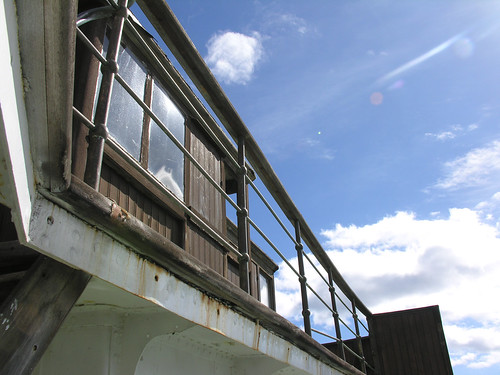
When La Palma slipped into the River Tees at the W.Harkess and Son shipyard in Middlesbrough, it was just 4 days before the sinking of the Titanic. The good work it went on to carry out included a Canarian nautical school, rescuing ship wrecked people and delivering supplies to alleviate droughts as far afield as Spanish West Africa. All that service came shuddering to a halt on March 17 1976 when La Palma limped into port at Las Palmas, Gran Canaria after one of her boilers, that fired the triple expansion steam engine, blew up. This marked the start of a long period of uncertainty and a succession of owners as the ravages of nature took their toll. Half realised plans came and went from making the ship into a yacht club to scrapping or sinking it. Eventually restoration groups from across the islands and the respective governments decided to restore La Palma as a living testament to those pioneering days. Backed with a large team of enthusiasts and volunteers, the foundation set sail on their own journey of discovery. Research was lengthy and even involved a pilgrimage to Dock Point, Middlesbrough, now itself a derelict relic of a bygone age.
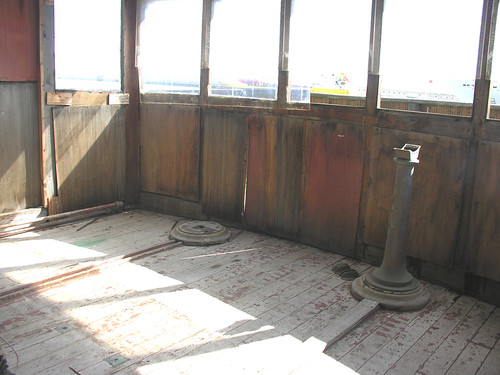
As I walked the wooden deck, I could only imagine this plucky ship defying the elements. The bright yellow funnels are proud and distinctive and will soon be joined by new wooden masts fore and aft. It has always been the intention to restore as much of the structure to its original specifications. Large parts of the riveted steel hull have had to be replaced, a major undertaking in itself. Much of the ship was looted during the years of neglect, adding extra complications to the makeover team. The bridge, the radio room, the smokers lounge and some first class cabins will be brought back to their former glory and this will help to make it a living museum giving an insight into its heydays. The engine room is the heart of La Palma and will be fully restored with a new modern engine installed.
Of course there will be new facilities, undreamt of by the original crew. A hold will be used for exhibitions and an art gallery. A large multi purpose hall will be a versatile venue for presentations, conferences and special events. Forget ships biscuits, the food on the new look La Palma will be much more in keeping with modern tastes. A restaurant will cater for around 50 people and for those wanting something less filling there will also be a cafeteria. For those wanting to probe the nautical past, the stern hold will become a library and museum dedicated to the science of navigation. The history of the Canary Islands and those who travelled to and between them will also be covered in some detail at the old station on the dock.

Stooping to enter the bowls of the ship, the rivets and cross beams still give a reassuring feeling of strength, the wooden steps down to the lower deck are new but are edged with the original steel reinforcers. The covers on the portholes are stiff but looking out at the ferry port or the huge cruise liner, MSC Fantasia, docked across the channel, is almost like peering into the future.
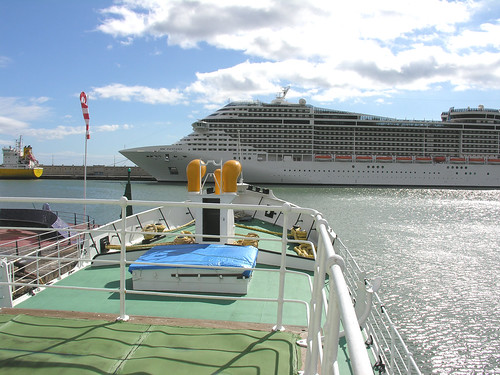
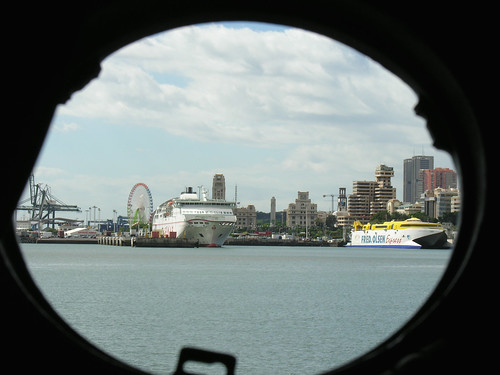
Sadly moving back up on deck, the bridge area shows the most sign of wear; the pine is full of little insect holes and a stand is all that remains of the original captains wheel. It will probably take another 2 years and 250,000 euros to complete the restoration, but it is a labour of love. The Fundacion meets every Tuesday, 6pm at Casa del Mar Avenida Francisco Larroche, 5th Floor, Santa Cruz, and they welcome new recruits.
The cruel and unpredictable nature of the sea tends to harden seafaring people but when La Palma finally slips anchor to start a new life, thousands of hearts of oak will swell with pride.
